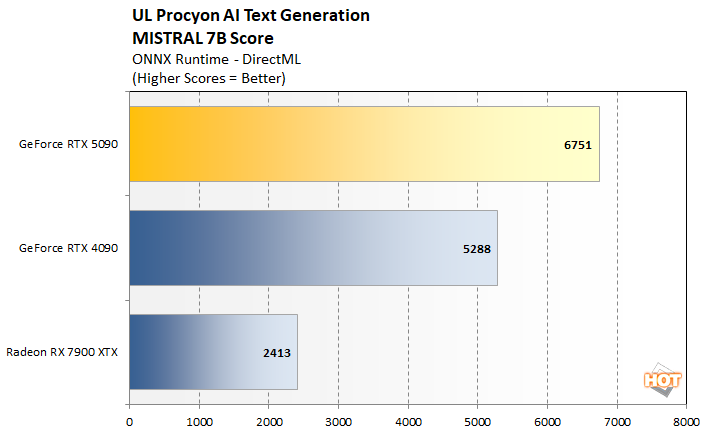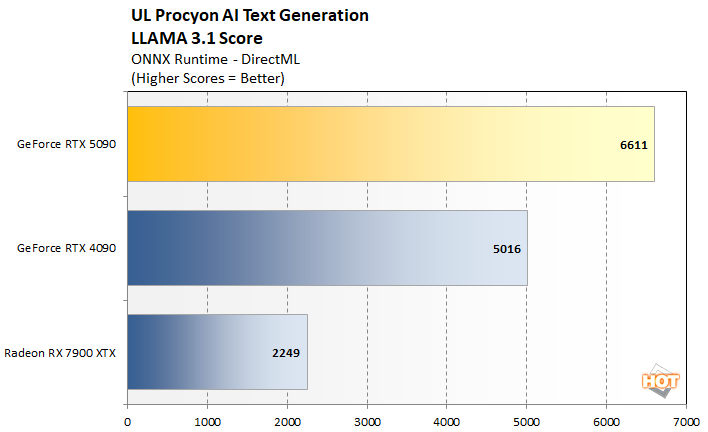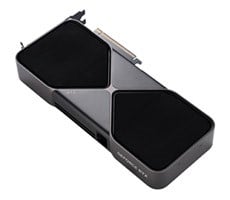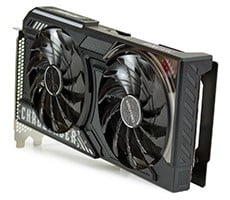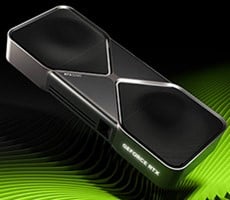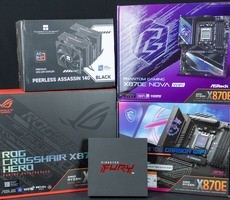NVIDIA GeForce RTX 5090 Founders Edition Review: Still King Of PC Gaming
All of this data is brand new, using the latest build of Windows 11 (24H2), with the latest drivers and firmware available for all components as of the date of publication.
Our Test System Configuration:
| Hardware Used: AMD Ryzen 7 9800X3D (4.7GHz - 5.2GHz, 8-Core) MSI X870E Carbon WiFi 32GB G.SKILL DDR5-6000 Samsung SSD 990 Integrated Audio / Network Radeon RX 7900 XT GeForce RTX 4090 GeForce RTX 5090 Relevant Software: Windows 11 Pro 24H2 AMD Radeon v24.12.1 NVIDIA Drivers v571.86 |
Benchmarks Used: MLPerf Client Geekbench AI Procyon AI Text Generation Procyon AI Stable Diffusion XL Blender v4.3 Blackmagic RAW Speed Test v4.3.1 V-Ray UL 3DMark UL VRMark Unigine Superposition Assassin's Creed Mirage Black Myth Wukon Homeworld 3 Horizon Zero Dawn Remastered Cyberpunk 2077 (press beta) The Talos Principle II F1 24 |
MLPerf Client Benchmarks
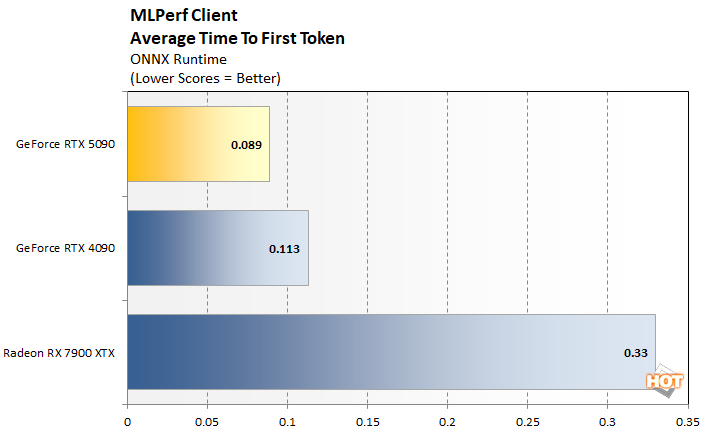
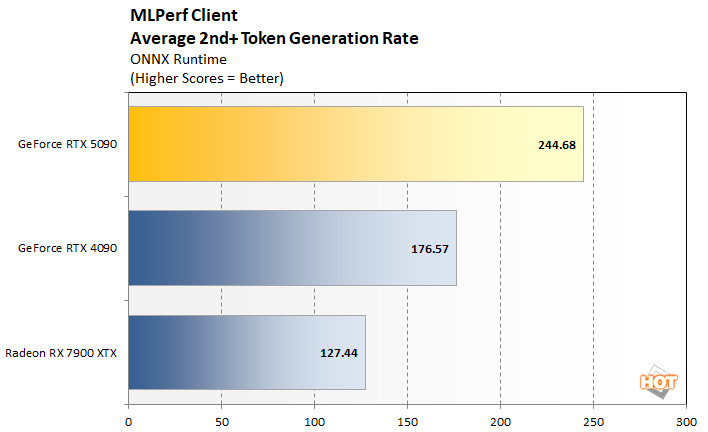
The MLPerf Client benchmark will present data for each of its four tests, in addition to a Geometric Mean for all of the test results combined -- the geomean is what we're reporting here. As you can see, the GeForce RTX 5090 offers up the first token quicker than anything else, and pumps out additional tokens at the highest rate as well.
Geekbench AI Testing
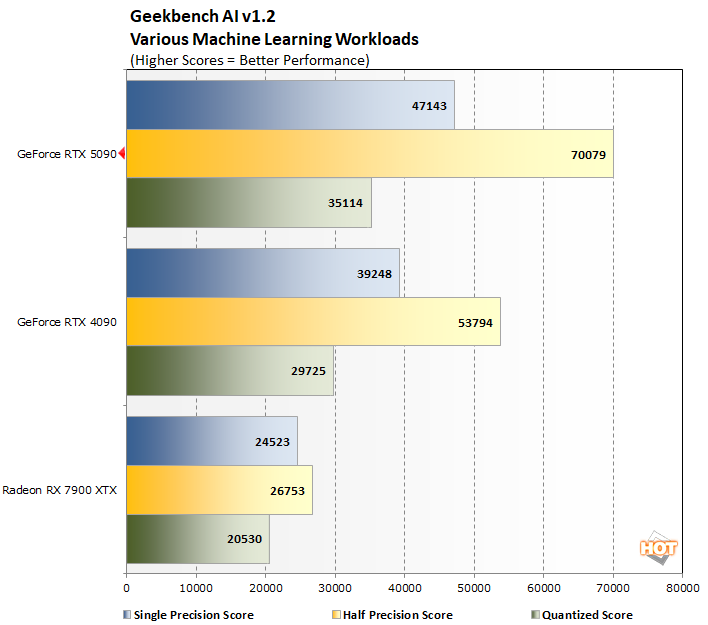
Once again, we see the new GeForce RTX 5090 leading the pack by a wide margin. The GeForce RTX 4090 has been the king of discrete GPUs for over 2 years and the new RTX 5090 leaves it in the dust. The Radeon RX 7900 XTX -- AMD's current fastest discrete GPU isn't even in the same ballpark.
UL Procyon AI Text Generation Benchmarks
With all four models, the GeForce RTX 5090 ends up being between 22% - 35% faster than the previous flagship GeForce RTX 4090 and it offers over 2X the performance of AMD's current best.
In the hardware details posted above the charts, you can see the workloads are fairly bursty, and even under periods with sustained 100% GPU utilization, the RTX 5090 barely breaks a sweat and operates at below 70°C.
UL Procying Stable Diffusion XL AI Image Generation
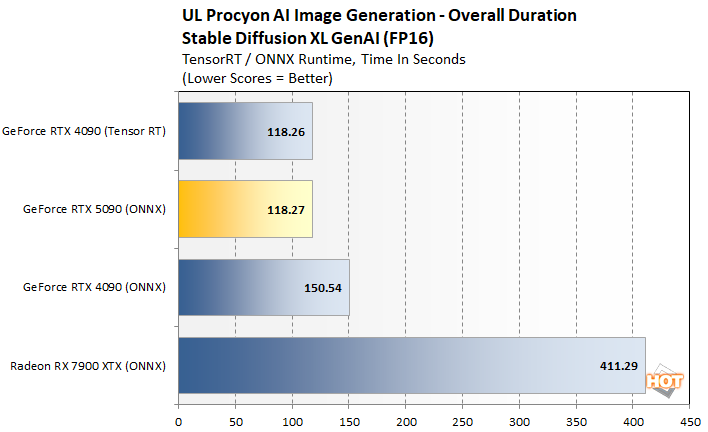
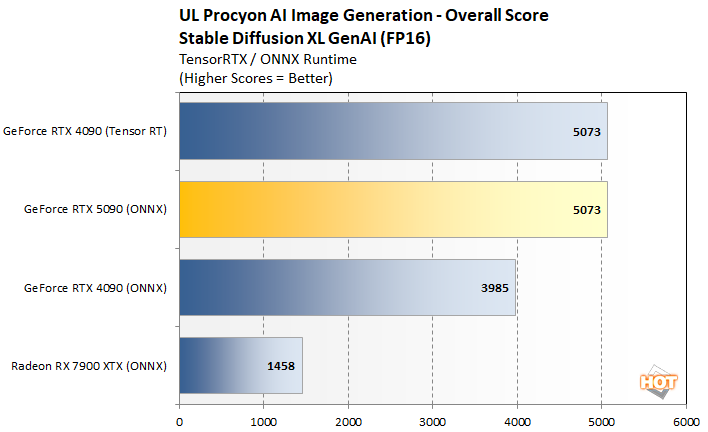
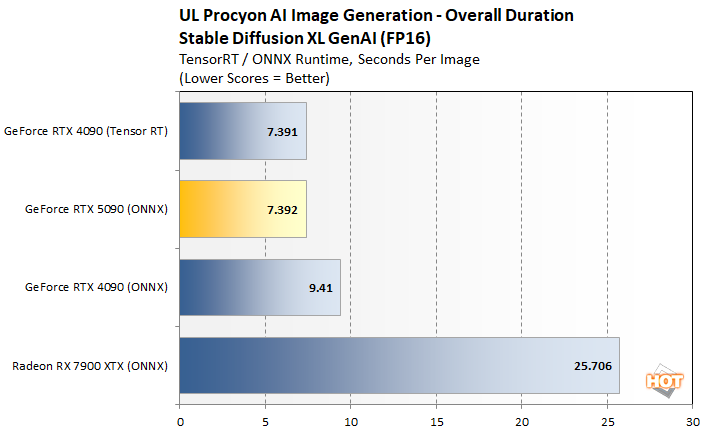
What is this we see? The GeForce RTX 5090 falling behind the previous-gen RTX 4090? Not quite. This benchmark hasn't been updated to support TensorRT on Blackwell either, so the RTX 5090 is somewhat gimped by using ONNX and DirectML. We have both results on the RTX 4090, however, to show the kind of uplift that will likely be possible on the new RTX 5090 when TensorRT is employed for optimal performance. In any case, even when using a sub-optimal inference engine, the RTX 5090 matches the 4090's best and smokes the Radeon.
Blender v4.3 GPU Rendering Benchmarks
Blender is a free and open source 3D creation suite that can handle everything from modeling, rigging, and animation, through simulation, rendering, compositing, motion tracking, and even video editing or game creation. The developers offer a standalone benchmark tool that will track performance while rendering a handful of models. We used all three of the default models for these tests...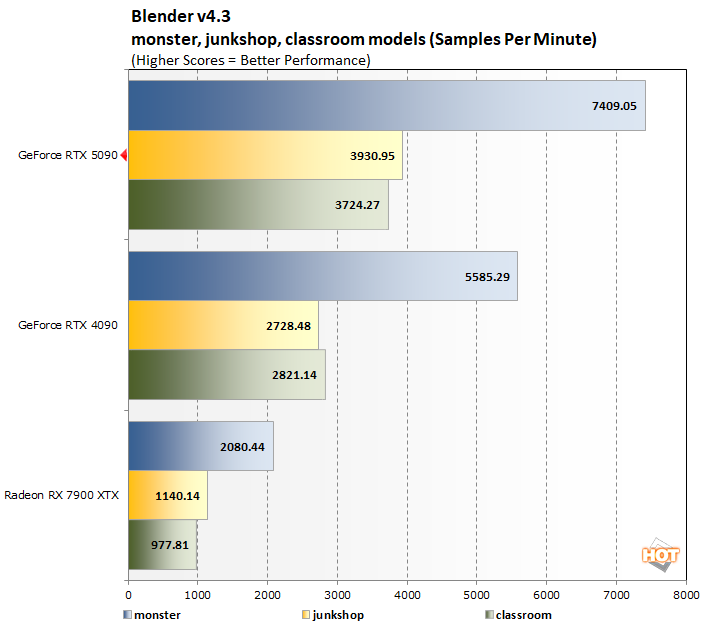
In our first 3D rendering test, the GeForce RTX 5090 outruns the RTX 4090 by approximately 32% - 44% depending on the model and once again lands at the top of the charts.
V-Ray Rendering
The V-Ray Benchmark is a free tool that measures rendering performance on CPUs, NVIDIA GPUs, or a combination of both. The GPU benchmark in particular features a complex scene designed to evaluate the capabilities of both the RTX and CUDA-based V-Ray 6 render engines.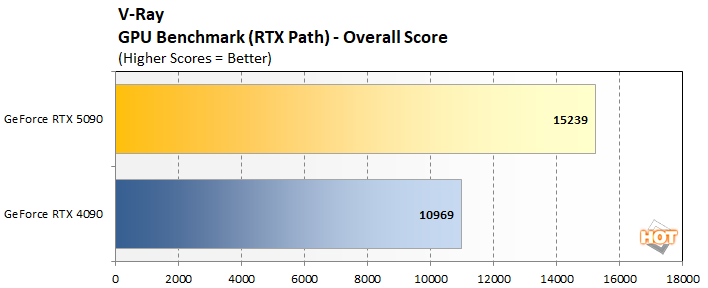
We tested V-Ray using the higher-performing RTX render engine, which had the new GeForce RTX 5090 outpacing the RTX 4090 by nearly 40%. Only NVIDIA RTX GPUs are supported in this particular test, hence the lack of Radeons in the chart.
Blackmagic RAW Speed Test Results
The Blackmagic RAW Speed Test is a CPU and GPU benchmarking tool that determines the speed of decoding full-resolution Blackmagic RAW video frames. The tool can be used to evaluate performance at various resolutions and bitrates on the CPU or using OpenCL or CUDA on a GPU. We're reporting four results here, at 8K and 4K resolutions, but at differing bitrates and compression levels.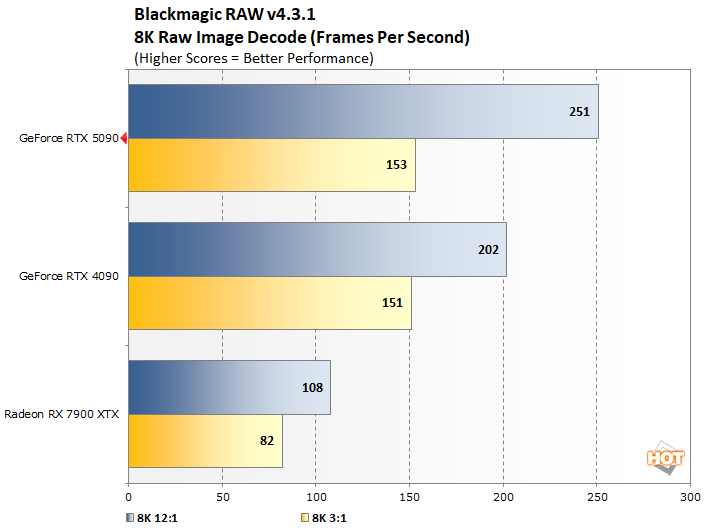
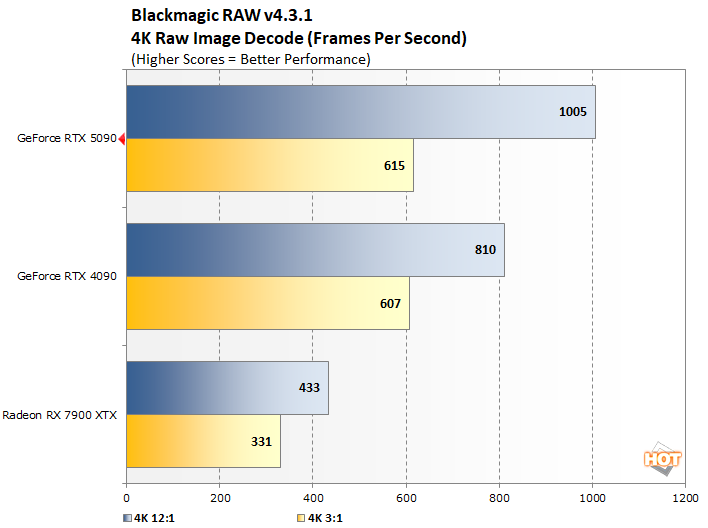
At both resolutions, the GeForce RTX 4090 and RTX 5090 are evenly matched with the semi-compressed 3:1 RAW files, but that test is also affected by and often limited by system memory bandwidth. With the more compressed 12:1 data, the Blackwell-based GeForce RTX 5090 stretches its legs at bit and outruns the RTX 4090 by about 25%.



